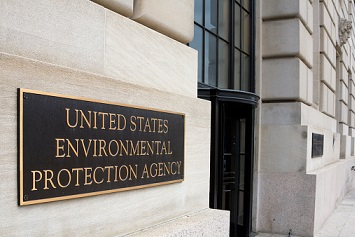The EPA only recently issued almost all the remaining area designations for the 2015 National Ambient Air Quality Standards (NAAQS) for ozone (only eight counties in the San Antonio, Texas, area have not been designated). Now, with the ink barely dry on those designations, the Agency is facing yet another Clean Air Act (CAA) deadline for reviewing the adequacy of the 2015 ozone NAAQS and revising those standards, if necessary, to protect the public health and welfare with an adequate margin of safety. The statutory 5-year deadline for completion of the review and potential revisions is October 2020.

In anticipation of the review, EPA Administrator Scott Pruitt has released a memo titled Back-to-Basics Process for Reviewing National Ambient Air Quality Standards. The memo notes that the Agency is already involved in reviewing the particulate matter NAAQS and wants to complete any needed revisions by December 2020. The process described in the memo would apply to all NAAQS reviews/revisions, and Pruitt states that the EPA should seek to identify efficiencies in the simultaneous review of these two important criteria pollutants.
Stronger Role for CASAC
Pruitt makes several points that may not have been emphasized in past NAAQS reviews. For example, the memo seeks to more directly involve the Clean Air Scientific Advisory Committee (CASAC) in the review process. The CASAC is an independent body established under the CAA to conduct research related to air quality, sources of air pollution, and the strategies to attain and maintain air quality standards. The memo notes that the Government Accountability Office found that “CASAC has never provided advice on adverse social, economic, or energy effects related to NAAQS because EPA has never asked CASAC to do so.” Under the NAAQS, the EPA may not consider cost when reviewing and revising the NAAQS. However, Pruitt says that the U.S. Supreme Court did note that CASAC’s “advice concerning certain aspects of ‘adverse public health … effects’ from various attainment strategies is unquestionably pertinent” to the NAAQS rulemaking record and relevant to the standard-setting process.” This appears to offer the Agency the opportunity to integrate cost into its NAAQS reviews to ensure that any revisions do not result in adverse public health effects.
Pruitt has initiated a process of removing and replacing certain CASAC members with individuals who have industry backgrounds as well as individuals from previously underrepresented geographic regions. The administrator also states that the memo responds to President Donald Trump’s April 2018 memo, Promoting Domestic Manufacturing and Job Creation—Policies and Procedures Relating to Implementation of Air Quality Standards.
Deadlines, Science, Policy
Pruitt’s memo lists five principles for NAAQS reviews:
- Meet statutory deadlines. All NAAQSs must be reviewed every 5 years. “However, EPA has often failed to do so, routinely taking twice that time before finalizing a review and any accompanying revision,” states the memo. “These delays result in uncertainty as well as lost opportunities for implementing the NAAQS to protect the environment in a manner compatible with a robust American economy.” The memo indicates that the EPA and the CASAC will look for efficiencies and opportunities to streamline the NAAQS review process to ensure that they finish within a 5-year interval.
- Address all CAA provisions for NAAQS reviews. This principle identifies the role of the CASAC in NAAQS reviews, specifically:
- Recommending any new NAAQS or revisions of existing criteria and standards as may be appropriate;
- Advising the administrator of areas in which additional knowledge is required to appraise the adequacy and basis of existing, new, or revised NAAQS;
- Describing research efforts necessary to provide the required information;
- Advising the administrator of the relative contribution to air pollution concentrations of natural as well as anthropogenic activity; and
- Advising the administrator of any adverse public health, welfare, social, economic, or energy effects that may result from various strategies for attainment and maintenance of such NAAQS.
- Streamline and standardize the process for development and review of key policy-relevant information. The memo says the EPA intends to be more efficient in how it reviews the science; focus on evidence most likely to influence an NAAQS review; and more directly involve the concerns of states, Indian Tribes, and local communities in NAAQS reviews.
- Differentiate science and policy considerations in NAAQS review process. The CAA provides a framework for timing NAAQS reviews and the role of the CASAC in the review process. However, at the end of the process, the law directs the EPA administrator to set policy— that is, make the final decision as to whether a particular standard is requisite or needs to be revised. The Agency should establish a clearer distinction between purely scientific findings and the wider range of policy concerns the administrator must consider in making judgments about requisite standards.
- Issue timely implementation regulations and guidance. When an NAAQS is revised, the Agency should provide—concurrently with the finalization—regulations, guidance, and technical information to assist state coregulators in developing approvable plans intended to show how any new NAAQS is to be attained and maintained. In the past, the Agency has been years behind in issuing these items, potentially contributing to nonattainment areas not attaining the NAAQS as quickly as practicable as well as misallocation of state planning resources.
Pruitt’s memo is here.

